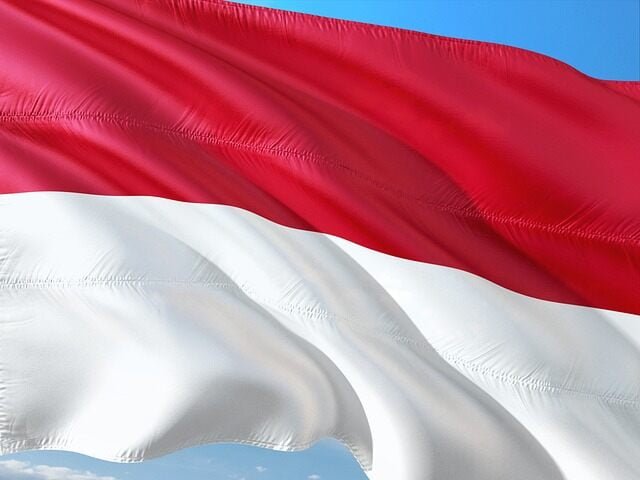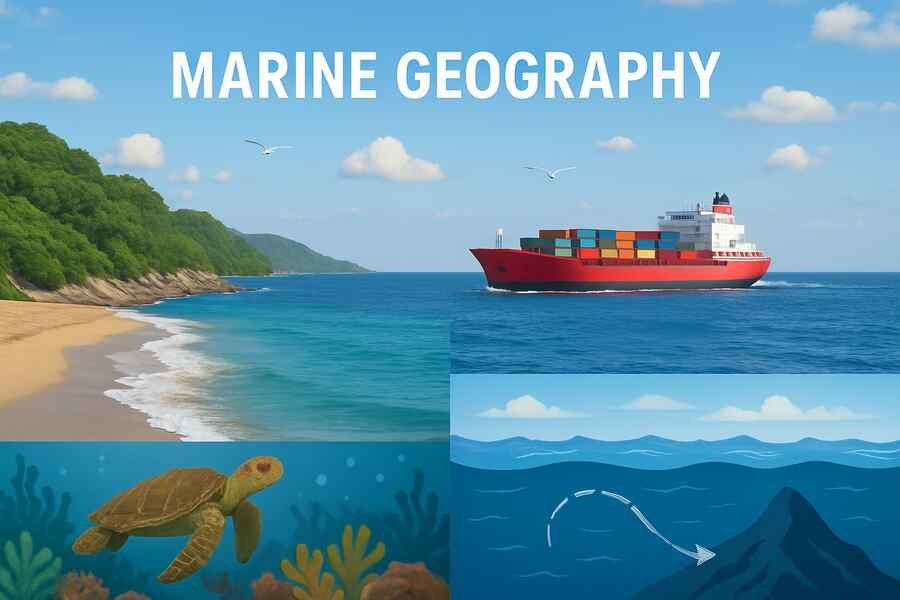Exploring the Diverse and Dynamic Geography of Indonesia
Indonesia is the world’s largest island country and one of the most diverse and dynamic places on earth. Its geography is shaped by a unique combination of volcanoes, mountains, rainforests, and oceanic currents, as well as its position at the crossroads of major trade routes between Asia, Australia, and the Pacific. In this article “Exploring the Diverse and Dynamic Geography of Indonesia”, we will explore the diverse and dynamic geography of Indonesia, providing a comprehensive guide to the country’s physical geography, cultural geography, history, and economic geography.
Physical Geography
Indonesia is located in Southeast Asia and is made up of more than 17,000 islands. Its landscape is dominated by a chain of volcanoes that runs through the country, including more than 120 active volcanoes. The highest peak is Mount Carstensz Pyramid, which reaches 4,884 meters (16,024 feet) above sea level.
Indonesia also has some of the world’s largest rainforests, including the tropical rainforests of Sumatra and Borneo. These rainforests are home to an incredible variety of plant and animal species, including the orangutan, Sumatran tiger, and Komodo dragon.
The country’s position at the intersection of the Indian and Pacific Oceans has also given rise to a unique marine environment. Indonesia is part of the Coral Triangle, an area that is home to more than 75% of the world’s coral species. Its marine biodiversity is also home to many species of sharks, whales, dolphins, and sea turtles.
Read also: Indonesia Travel Guide | Preparing for your trip, practical guide, advice, tips and itineraries
Some key features of Indonesia’s geography that have significant impacts on the country and the world include:
Exploring the diverse and dynamic geography of Indonesia, some key features are:
- Volcanoes: Indonesia is home to more than 120 active volcanoes, including some of the most explosive in the world. These volcanoes can have devastating impacts on the country’s people and infrastructure, as seen in recent eruptions of Mount Merapi and Mount Sinabung.
- Rainforests: Indonesia’s rainforests are some of the largest and most biodiverse in the world, and they play a critical role in regulating the global climate and supporting the country’s economy. However, they are also under threat from deforestation and development, which can have severe ecological and social impacts.
- Coral Triangle: Indonesia is part of the Coral Triangle, a region of the Pacific that is home to the highest diversity of coral and fish species in the world. This region is important for global fisheries and tourism, but it is also threatened by overfishing, pollution, and climate change.
- Cultural diversity: Indonesia is home to more than 300 ethnic groups, each with its own unique culture, traditions, and languages. This diversity is an important part of the country’s national identity, but it can also create social and political tensions.
- Economic development: Indonesia is one of the fastest-growing economies in Southeast Asia, but it still faces significant challenges in terms of poverty, inequality, and infrastructure. The country’s natural resources, including oil, gas, coal, and minerals, are a key driver of economic growth, but they also create environmental and social challenges.
Cultural Geography
Indonesia is a diverse country with a rich cultural heritage. The country has more than 300 ethnic groups, each with its own traditions, customs, and languages. The largest ethnic groups are the Javanese, Sundanese, and Madurese.
Indonesia’s culture is heavily influenced by its history of trade and migration. Indian, Chinese, and Arab traders and merchants have all left their mark on Indonesian culture, as have the Dutch, who colonized the country for more than three centuries.
Religion also plays an important role in Indonesian culture. The country is predominantly Muslim, but it also has significant populations of Christians, Buddhists, and Hindus.
History, exploring the diverse and dynamic geography of Indonesia
Indonesia has a rich and complex history that spans thousands of years. The country was part of several powerful empires, including the Srivijaya, Majapahit, and Mataram empires, which controlled much of Southeast Asia.
In the 16th century, the Dutch arrived in Indonesia and established a colonial presence that lasted until World War II. After the war, Indonesia declared its independence and became a republic in 1949.
Indonesia has faced many challenges since its independence, including political instability, economic inequality, and natural disasters. However, the country has also made significant progress in recent years, becoming one of the fastest-growing economies in Southeast Asia.
Key features of Indonesia concerning Cultural Geography
Indonesia’s cultural geography is characterized by its incredible diversity and complexity, shaped by centuries of interactions among different ethnic groups and religious traditions. Some key features of Indonesia’s cultural geography include:
- Ethnic diversity: Indonesia is home to more than 300 ethnic groups, each with its own unique language, customs, and traditions. The largest ethnic group is the Javanese, who make up around 40% of the population, followed by Sundanese, Malays, and Madurese. Other significant ethnic groups include the Batak, Minangkabau, and Papuans.
- Religion: Indonesia is the world’s largest Muslim-majority country, with around 87% of the population practicing Islam. However, the country also has significant Hindu, Buddhist, and Christian communities, as well as smaller communities practicing traditional animist and shamanic religions.
- Language: Indonesia’s official language is Bahasa Indonesia, a standardized form of Malay that is widely spoken throughout the country. However, there are also hundreds of local languages and dialects spoken, many of which are in danger of extinction.
- Arts and culture: Indonesia has a rich and diverse artistic heritage, including traditional music, dance, and theater forms such as gamelan, wayang, and kuda kepang. Traditional crafts such as batik, weaving, and woodcarving are also an important part of the country’s cultural heritage.
- Cuisine: Indonesian cuisine is known for its bold flavors and diverse ingredients, reflecting the country’s history of trade and cultural exchange. Some of the most popular dishes include nasi goreng (fried rice), sate (grilled meat skewers), and gado-gado (vegetable salad with peanut sauce).
These cultural features of Indonesia contribute to the country’s vibrant and diverse society, but also pose challenges in terms of social cohesion and political stability, particularly in relation to issues of identity and religious conflict.
Economic Geography
Indonesia’s economy is heavily reliant on its natural resources, including oil, gas, coal, and minerals. The country is also one of the world’s largest producers of palm oil and rubber.
Indonesia is a member of the G20 and has been recognized as one of the emerging economies of the 21st century. However, the country still faces significant challenges, including high levels of poverty and inequality, a large informal sector, and inadequate infrastructure.
In recent years, the Indonesian government has launched a number of initiatives to address these challenges and promote economic growth, including investments in infrastructure, education, and healthcare.
Key features of Indonesia concerning Economic Geography
Indonesia’s economic geography is characterized by its rich natural resources and strategic location between the Pacific and Indian Oceans. Some key features of Indonesia’s economic geography include:
- Natural resources: Indonesia is a resource-rich country with abundant reserves of coal, oil, natural gas, minerals, and metals. These resources have been a major driver of the country’s economic growth, but they also pose challenges in terms of environmental degradation and social conflict.
- Agriculture: Agriculture is an important sector of the Indonesian economy, accounting for around 14% of GDP and employing around 38% of the population. The country is a major producer of rice, palm oil, rubber, coffee, and cocoa.
- Manufacturing: Indonesia has a growing manufacturing sector, particularly in the automotive, electronics, and textiles industries. The country’s strategic location and large domestic market make it an attractive destination for foreign investment.
- Infrastructure: Indonesia’s infrastructure is in need of significant investment, particularly in transportation, energy, and telecommunications. The government has launched several initiatives to improve infrastructure, including the construction of new highways, airports, and ports.
- Tourism: Indonesia’s natural beauty and cultural heritage make it a popular destination for tourists from around the world. The country is home to several UNESCO World Heritage sites, including Borobudur Temple and Komodo National Park.
These economic features of Indonesia offer opportunities for growth and development, but also pose challenges in terms of social and environmental sustainability, particularly in relation to issues of poverty, inequality, and resource management.
Conclusion
Indonesia is a country of incredible diversity and dynamism, with a geography that is shaped by its unique combination of volcanoes, rainforests, and oceanic currents. Its cultural heritage is equally diverse, with more than 300 ethnic groups and a rich history of trade and migration.
Sources: PinterPandai, Indonesia Investment, Every Culture, Authentic Indonesia



